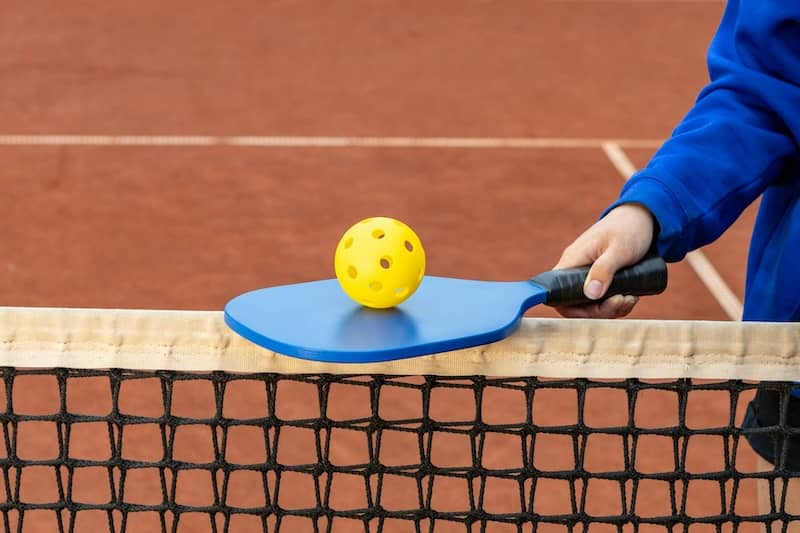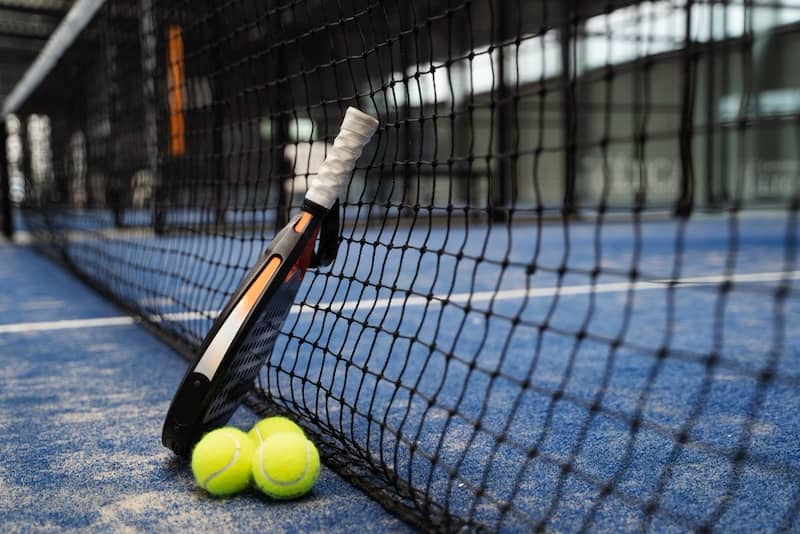No one enjoys feeling out of their league in a game. Whether that’s golfing with Tiger Woods or a game of one-on-one with Michael Jordan, it can suck the fun out of what is supposed to be an enjoyable activity. And Tiger probably wouldn’t much enjoy beating a weekend golfer, just as Michael likely wouldn’t celebrate victory over the high school junior varsity team member. The best games are against players of equal skill, where we are challenged but not dominated.
While pickleball is known for its friendly culture and lighthearted vibe, which means more skilled players are often willing to play down when facing a beginner across the net, the best games happen among those with relatively equal skill. But how do you know how you stack up against someone before you start a game?
This is where skill ratings come into play. Just as in tennis, pickleball has a system for quantifying a player’s skill so that they can find suitable competitors, enter competitions at the appropriate level, and get the most out of their games. Let’s break down the system of pickleball ratings and skill levels.
Self-Rating
When you are first starting out, you will use a self-rating. That means you assess your skills and give yourself the appropriate rating based on your progression and abilities. For informal games or friendly competitions, self-rating is sufficient. Most recreational players will only have the rating they give themselves.
Self-ratings have two digits, one before and one after a decimal point. The second number is always either a zero or a five. 1.0, 3.5, 4.5, or 5.0 are all examples of self-ratings, but what do these pickleball levels mean?
Beginner Pickleball Players
A rating of 1.0-3.0 is considered beginner-level.
1.0-2.0
If you are new to pickleball, have very little racket-sports background, and have a limited understanding of play rules, you fall in this range. Once you’ve played a few games and assessed your skills, you can decide if you need to stay in this range for a while or if it is time to graduate to 2.5.
2.5
A 2.5 player understands the rules and scoring system of pickleball. You can sometimes participate in a sustained rally with players of roughly equal skill. If you are a 2.5-rated player, some of your shots still go rogue, but you have some control over the ball.
3.0
Once you hit serves, forehand drives, and service returns at a medium pace, you can move on to 3.0. At this rating, your shots have decent speed and power, but you aren’t yet smashing returns back over the net. You still lack some control and consistency, so the ball doesn’t always go where you intended. You struggle with dink shots, though you can occasionally hit them well. Players at this level have begun embracing some basic strategy rather than simply focusing on chasing down shots and getting them back over the net.
Intermediate Pickleball Players
Once you reach level 3.5, you are no longer considered a beginner player.
3.5
At this level, you can sometimes control the pace of the ball on serves, returns, and drives. You can hit dinks and drop shots with consistency and control. You rarely hit an uncontrolled shot. You don’t have laser-like precision, but the ball typically lands approximately where you intended it to go. You’ve begun to embrace strategy, focusing on where to place your shots and what pace to use to challenge your opponents. Your game includes both hard and soft shots. A 3.5-rated player moves into the non-volley zone when the opportunity presents itself.
4.0
At 4.0, you are a skilled pickleball player. Your game includes solid serves, service returns, forehands, backhands, volleys, dinks, and drop shots. You consistently control the placement and speed of your shots and integrate strategy into your choices. You understand how to evaluate your opponents’ weaknesses and exploit opportunities. Rarely do you make an unforced error; if a shot is returnable, you get it back over the net.
Advanced Pickleball Players
Once your rating is 4.5 or above, you are an advanced player.
4.5
You’ve mastered depth and direction and can hit any type of pickleball shot. You can do everything a 4.0 player does with even more control and mastery. Almost never do you make an unforced error.
5.0
Your footwork is impressive, efficient, and purposeful. You can skillfully adjust your play based on your opponents’ skills, weaknesses, and choices. Your game is less about whether you can make a shot and more about integrating strategy and making choices to create weaknesses in your opponent’s position. You are often thinking several shots ahead.
5.5+
At this level, you can easily beat most opponents. You’ve mastered all types of shots and have a deep understanding of strategy. You will be highly successful at tournaments against even the most skilled opponents.
For recreational play, you can simply award yourself the appropriate rating. If you want to start tournament play, you must be a Pickleball USA member and submit your self-rating online.
USA Pickleball Tournament Player Rating (UTPR)
To participate in tournaments, you must first submit your self-rating. After playing in a USA Pickleball tournament, your rating will adjust automatically based on how well you do in your games. The tournament software will automatically calculate your rating. This number is called your USA Pickleball Tournament Player Rating, or UTPR.
Your UTPR determines your seeding in official tournaments. At the start of the tournament, the player with the highest UTPR will be the number one seed. This system is similar to how seeding is used in tennis to create the brackets and determine the schedule.
UTPR ratings are either two digits, like the self-ratings, or four digits, with three digits after the decimal point instead of one. Your rating is often rounded to two digits. For example, if you rate 5.124, you will sometimes use 5.0. You will also need a UTPR for singles, doubles, and mixed doubles if you intend to compete in all three types of pickleball, and your rating may differ for each.
Your UTPR will increase or decrease based on wins and losses and the ratings of your opponents.
Dreamland Universal Pickleball Ratings (DUPR)
Dreamland Universal Pickleball Ratings is a newer rating system not commonly used. It is similar to UTPR in that it determines seeding in tournament play. The calculations differ from UTPR, with different weights given to the skill level and ranking of your opponents in your wins and losses. Your DUPR doesn’t differentiate between singles, doubles, and mixed doubles. One rating applies to all three types of games.
DUPR is the official rating system used by the Professional Pickleball Association (PPA) and their tournaments.
Know Your Rating
Even as a casual, recreational pickleball player, it’s good to know your rating. That allows you to set up matches that will challenge you and help you improve without being frustrating. Playing with opponents of similar skill increases your enjoyment and will enable you to hone your skills. If you are interested in improving your game and rating, whether you are a 1.0 player just picking up a pickleball racket for the first time or a 4.0 player looking for tips, consider watching pickleball instructional videos or taking pickleball lessons.



